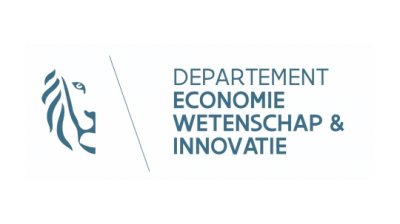It is crucial to consider changing needs already during the office space procurement process. You can achieve this by thinking ahead and opting for modular, flexible, and upgradable solutions, both at the initial purchase and in case of any future redesign or relocation. Furthermore, operational costs for office furniture are low, and the lifespan often extends beyond standard contract terms. Considering the total cost of ownership, where the period of use plays a significant role, is essential. Therefore, avoiding premature replacement is wise.
In line with this, the EU GPP Criteria align seamlessly: "The dominant fraction (80-90%) of environmental impacts is related to furniture materials/components. Although the energy content in metals and plastics is higher than in wood, sustainability and recyclability are also crucial considerations. Specifying recycled materials can help reduce the impact of materials."
Circular Strategies for Office Furniture
.png)
- Internal Sharing: Workspaces should be designed efficiently and flexibly, taking into account the actual needs of users and the occupancy rate on the floor. Consider outsourcing this process to circular market players with experience in using and maximizing existing furniture, possibly supplemented with refurbished furniture. Sharing workspaces among colleagues, where not everyone needs their own workspace, can increase efficiency. Flexibility means that workspaces should be adaptable to the needs of the moment. This may include easily movable or foldable meeting tables to make spaces multifunctional. This aligns with the (easier) internal sharing of furniture.
- Peer-to-Peer Sharing: This involves sharing facilities and resources among multiple users or owners, often in a sequential order. Think of buildings with multiple companies, where one company makes its meeting spaces available to other companies in the same building. On large-scale project sites, this is often organized by the site manager, but on smaller company sites, it can be informally arranged between organizations. Another common example of peer-to-peer sharing is when organizations make their facilities available to other associations outside of their own working hours.
- Renting: Consider using as-a-service (AAS) models for certain items such as lighting and carpet tiles. It's important to research whether the Total Cost of Ownership (TCO) is more favorable than purchasing these items. When using AAS services, it's advisable to request guarantees related to circularity. More information on leasing.
- Reuse and Refurbishing: Choose second-hand or refurbished products or have your own furniture refurbished. Ensure that you maintain an accurate inventory of your own stock so that you can determine which pieces of furniture can be reused or refurbished during a redesign. This can result in significant cost savings. If you have a design process for redesigning, add the inventory to the specifications and emphasize the importance of maximizing the use of existing furniture in the design.
- Ensure that warranty terms are commensurate with the value of the furniture piece. Although refurbished furniture is not always cheaper to purchase than new furniture, it scores better on the Total Cost of Ownership (TCO) because it involves reusing many materials.
.png)
- Understanding the Proportion of Recycled, Biobased, and Virgin Materials: Particularly in the case of office furniture, materials significantly contribute to environmental impact. Choosing recycled materials, biobased resources, and durable materials can help reduce this impact. It's crucial to request transparency from your supplier or manufacturer regarding the proportion of recycled, biobased, and virgin materials in their products.
- Designing for Longevity: Keep in mind that the use of durable materials only leads to a reduction in environmental impact if the product is actually used for an extended period. Whether durable materials fall under the category of non-renewable virgin input or not depends on the specific situation.
- Increasing the Share of Recycled and Biobased Materials: To determine a realistic percentage of recycled materials, you can engage in a market dialogue or conduct a Request for Information (RFI) to gain insights into the availability of such materials in the market. Based on this information, you can make appropriate yet ambitious choices in your specifications.
.png)
- Optimizing Guarantees: It is crucial to align the contract duration and desired guarantees with the intended lifespan of the product. Ensure that the contract provisions align with your sustainability goals.
- Contractual Agreements for Maintenance and Repairs: Maintaining and repairing office furniture can significantly extend its lifespan. Therefore, include maintenance and repair in your contract or establish a separate contract for this purpose. Define the frequency of maintenance or opt for performance-based maintenance. Provide clear agreements regarding repair lead times and the location where they will be carried out.
- Repairability and Maintainability: Identify the parts susceptible to wear and tear by collaborating with your internal maintenance team or during market research. Request price lists and availability of spare parts for a reasonable period relative to the expected lifespan of the product from your suppliers. If you have an internal maintenance team, ensure they receive the necessary instructions and training for maintenance and repair.
- Upgradeable Products: Consider products that can be adapted to future innovations, especially if they have a long lifespan. For example, products that can be transformed from a fixed workstation to a sit-stand solution.
- Designing for Longevity: Choose high-quality materials and products that meet European quality standards for durability, such as scratch resistance, tensile strength, lightfastness, friction resistance, and pressure deformation.
- Modular/Adaptable Design: Opt for furniture that can be adjusted to changing needs in the future. Think of movable fixtures and partitions that are non-invasively adaptable and customizable to different configurations.
- Contractual Incentives for Extending the Lifespan: Consider including in the contract that the contractor is responsible for (supporting with) changes in the layout, thereby extending the lifespan.
- Supplier Advice on Use Optimization: Ensure that the supplier provides users with advice, instructions, or training to ensure correct usage and extend the lifespan.
.png)
- Design for Disassembly: Choose products that can be easily disassembled, avoiding glued or riveted constructions, for instance. This simplifies the process of repairing or replacing parts. Also, ensure you receive disassembly instructions from the supplier.
- Modular Design: Prefer modular products that can be easily adapted to changing needs, increasing the likelihood of reuse. For example, furniture with interchangeable modules that can be added or replaced easily.
- Standardized Design: Utilize standardized dimensions to make it easier to reuse products internally or externally. For instance, ensure that sheet materials remain uniform without complex cut-out shapes that hinder reuse.
- Contractual Agreements for Takeback and Reuse: Include specific provisions in your contract for the takeback or repurchase of products by the supplier, with guarantees for reuse. This may involve the supplier taking back products at the end of their lifespan and reusing or recycling them.
- Encourage Circular Business Models: Consider collaborating with companies or organizations whose core activity is the reuse of products and components. Ensure that these companies are recognized collectors or work with recognized entities. If this is not feasible, consider the reuse of individual components of products as an alternative.
.png)
- Design for Recycling: Choose products whose components primarily consist of mono-materials that can be easily separated from each other. It's important to note that mono-materials can even occur in more complex structures, for example, a tabletop with an HPL finish is still considered a mono-material, as well as a composite material that appears as a single entity.
- Transparency in Materials: Request a material passport or clear markings on product components so that the different materials can be correctly recycled.
- Contractual Arrangements for Takeback and Recycling: Include specific provisions in your procurement contract for the takeback (or repurchase) of products. Request guarantees for high-quality recycling (which involves optimizing the use of resources throughout the chain and minimizing external environmental impacts. This achieves a higher societal return, both socially and economically) if reuse is not possible.
- Encourage Circular Business Models: Consider entering into a contract with a recognized waste collector who disposes of non-reusable products in separated material streams for high-quality recycling. Make sure to obtain the necessary guarantees.
- Reduction of Toxicity: The use of toxic substances in office furniture can have a negative impact on indoor air quality and the health of employees. This can also complicate recycling when regulations regarding these substances become stricter. Therefore, pay special attention to this aspect in your procurement policy. This is particularly important for products such as adhesives and finishing materials, fillings and upholstery materials of furniture, chromed or galvanized metals, and wood that is treated, coated, or glued. In the EU GPP criteria, you can find guidelines and labels to include in your procurement contract.
Relevant Labels and -Criteria
- EU GPP criteria on furniture
- There are various options for interior textiles with the EU Ecolabel.
- EU Ecolabel assesses various environmental impacts throughout the product's lifecycle.
- The Oeko-tex 100 label primarily focuses on the health of people in the production chain and end-users.
- For complete pieces of furniture, several ecolabels are available. In recent years, we have seen furniture with labels such as Blaue Engel, Nordic Swan, NF Environnement, and C2C. Additionally, there are furniture pieces with labels specifically addressing emissions into the indoor environment.
Circular procurement projects
Office furnishings
Making furniture that tells a story is the aim of Turnhout-based company ResourceLab. Working with architects, they provide offices and other interiors with unique, custom-made pieces of furniture. W…
The Norwegian Agency for public and financial management (DFO) moved to new office buildings in October 2021. The organisation aimed to reuse as much of its furniture as possible in its various locat…
The Agency for Facility Operations (AFFO) is the central purchasing body for the Government of Flanders administration. Because circular public procurement is addressed in the Government of Flanders’…
Lighting
The library in Kortrijk is the first building in Belgium to be equipped with circular lighting. In this business model, the supplier (Philips Lighting) is engaged as the partner for supplying light, …
The City of Mechelen was the first customer for ETAP's lighting-as-a-service (LAAS). In a LAAS model, lamps aren’t sold, but light. ETAP is responsible for providing the City of Mechelen with goo…
Circular procurement of offfice furnishings on screen
Circular procurement of lighting on screen
Publications about circular office furnishings
According to the European Environmental Bureau, 10 million tonnes of furniture are discarded by businesses and consumers in the European Union each year, the majority of which ends up in the landfill…
The second publication from the Interreg NSR project ProCirc discusses leasing as a replacement for the traditional ownership model. It contains interviews with users and a supplier.
This is an English translation of short case descriptions that are part of a larger report on Circular Procurement and Strategies among Norwegian Municipalities, developed by Inventura AS on behalf o…
Within the Interreg NSR project ProCirc a webinar was organised about circular office furniture. Experiences from suppliers as well as buyers are shared.
The European furniture industry welcomes the new Circular Economy Action Plan of the European Commission, strongly supports the transition to a circular economy and is ready to be involved in making …
This document analyses the current status of the circular economy within the furniture sector in Europe and Spain (some other EU countries will follow), it mainly focuses on the level of deployment o…
With support from the Circular Flanders Open Call, the 3 C platform made an overview of existing labels and certificates for sustainable and circular office furniture.
The EU GPP criteria are developed to facilitate the inclusion of green requirements in public tender documents. While the adopted EU GPP criteria aim to reach a good balance between environmental per…
Rijkswaterstaat (The Netherlands) is actively working on the transition towards a circular economy. Together with Rebus, Pianoo the goverment and TurnToo a first step was taken.
Publications about Circular Lighting
The European Commission has developped a series of sector specific LCC calculation tools which aim to facilitate the use of LCC amongst public procurers. This is the user guide for the LCC for GPP fo…
The European Commission has developped a series of sector specific LCC calculation tools which aim to facilitate the use of LCC amongst public procurers. This is the LCC tool for GPP for Indoor Light…
Overview of product categories
Information about circular procument and example cases per specific product category.










.png)



















